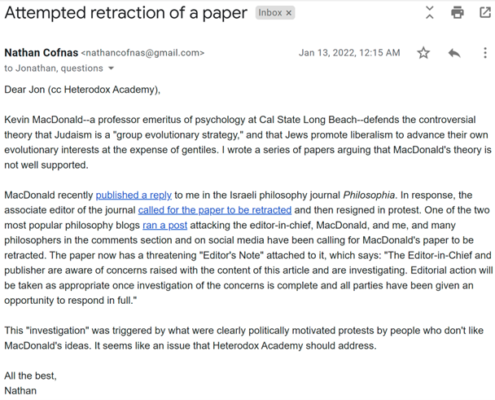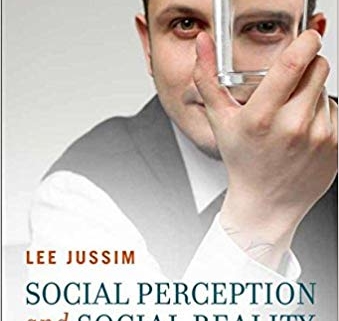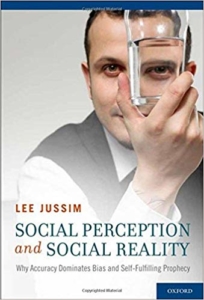University of Virginia Law Stacks Charlottesville Prosecutor’s Office for Personal Vendettas
The August 11, 2017 tiki-torch procession was a total humiliation for the University of Virginia (UVA). Three hundred men conducted a fair and legal protest of Jewish power on their precious campus, and their Antifa goons weren’t able to break it up.
So, UVA—a feeder-school for the FBI and the Department of Justice—decided to get revenge by weaponizing the judicial system.
As soon as the smoke had cleared, UVA President Teresa Sullivan commissioned Law School Dean Risa Goluboff to find a way to launch prosecutions. Her report was submitted exactly one month later. She proposed: restrictions on campus free-speech, a closer relationship with the FBI’s “fusion center,” and prosecutions based on a statute so obscure that UVA police didn’t even know about it.
Dean Goluboff (Jewish) is no objective observer. She claims to have been deeply affected by the events of August 11. In December 2018, she spoke with a “local judge and UVA alumnus” at a holiday party. She remembered thinking “Even a year and a half later, the events were too raw. My own involvement and feelings about it were too complicated.” [1]
It is noteworthy that this exchange happened at the time of the farcical James Fields trial before local judge and UVA alumnus Richard E. Moore. More on him later.
Goluboff was not the only UVA Law faculty who have agitated for prosecutions. Another instigator was Professor Anne Coughlin. Before the Unite the Right Rally (UTR) of August 12, 2017, Coughlin acted as a liaison between pro-Jewish groups and city officials, especially former Mayor Mike Signer (Jewish).
Describing her relationship with Signer, she says “Well, I’m, you know, kind of an institutional player. I know the mayor really well…. I’m pretty sure they knew that I had good relationships with the city—the powers that be in the city, Mike Signor [sic] in particular.”[2]
 Professor Anne Coughlin from UVA Lawyer Magazine, Fall 2017
Professor Anne Coughlin from UVA Lawyer Magazine, Fall 2017
She also boasts of a long career in Antifa “activism.” During the rally, she took on an active role with Antifa, driving personnel between their lead-elements at Lee Park and their operational headquarters at First United Methodist Church.
In the years since, Coughlin has spearheaded efforts to bring prosecutions, no matter how flimsy. Writing in Cville Weekly in September 2019, she upbraided then-Commonwealth’s attorney Robert Tracci for not prosecuting anyone who participated in the tiki-procession under Virginia’s statute against “burning an object with an intent to intimidate.”
Like with their efforts to stop the tiki-vigil, UVA and Antifa militants have worked hand-in-hand. In an October 11, 2023 podcast (see here, c 53:00), Antifa ringleader Edward Gorcenski bragged about having convinced the prosecutor to bring these charges.
Prosecutor Tracci, no right-winger himself, recognized that there was no legal argument and refused to press charges. Charlottesville District Prosecutor David Chapman also refused to press charges for other tiki-processions that had happened in his jurisdiction.
Torturous and Abusive Prosecutions.
As strange as it might seem in an age of frivolous lawsuits and baseless criminal charges, this is actually illegal. It’s called barratry—using the courts to pursue a personal agenda.
But that did not deter Coughlin and her allies at UVA Law. They maneuvered to get a new, more pliable prosecutor elected.
They succeeded in 2019 with Jim Hingeley. Coughlin personally donated to his campaign. Other donors included J6 inquisitor and UVA faculty-member Timothy Heaphy, as well as Jewish multi-billionaire George Soros.
But Hingeley’s most generous financier by far was Brooklyn-born billionaire Sonjia Smith, who gave him $114,000. Smith is the wife of real-estate speculator and former Goldman Sachs Vice President Michael Bills who is also a UVA faculty member. Both have dumped millions of dollars into Virginia politics since 2019.
Puppet-prosecutor Hingeley took his sweet time bringing the cases. Elected in 2019, he waited until April of 2023 to start charging people with “burning an object with intent to intimidate.” Lucky for him, Virginia has no statute of limitations.
Hingeley (UVA Law ’76) has dozens, maybe hundreds of secret indictments in hand. In a just society, he would simply arrest every suspect and put on one big trial.
But in Jewish-ruled America, the common practice is to first bully a few people into taking plea-deals then to use their guilty-pleas as evidence against other defendants.
To get into the legal niceties, the statute in question does not even apply. It is intended to stop the KKK from burning crosses in people’s lawns. It is not intended to revoke your free speech while holding a torch or a candle or grilling a steak.
According to the legal reasoning of UVA Law—excuse me, the prosecutor’s office—any fire “burns something.” Cigarettes burn tobacco. Candles burn wicks. Automobile engines have a spark. According to this absurd and malicious interpretation, saying mean things is free speech, but doing so while smoking is a felony, punishable with up to five years in prison.
The Virginia General Assembly never intended for the law to be used this way. In 2019, two years after the tiki-vigil, a bill was introduced to amend the statute to include “using a flame producing instrument.” The bill did not pass. It is quite clear that, in the understanding of the legislature, the original statute does not cover the use of tiki-torches.
Lead Prosecutor is an Antifa… and a Witness.
The lynchpin of the whole conspiracy between UVA and the Commonwealth’s Attorney is William Lawton Tufts. Tufts works in Hingeley’s office and has been the lead attorney on the tiki-procession prosecutions.
Oddly, Tufts did not graduate from UVA. But he did work there. At the time of the tiki-procession, he was working at UVA’s Public Service Center, which prides itself on placing graduates in the Department of Justice. In plain English, Tufts was a recruiting sergeant for the feds.

William Lawton Tufts from UVA Lawyer Magazine, Fall 2017
Back in 2017, he also worked with Antifa. Along with his friend and colleague, the above-mentioned Professor Anne Coughlin, he was a liaison between city officials, police and Antifa groups.[3] He was also on the Police Citizen’s Advisory Panel, a job that required him to attend meetings and communicate regularly with the police.
Along with Coughlin he conspired with UVA Professor Jalane Schmidt to pressure authorities into giving UVA/Antifa what they wanted. According to Coughlin’s testimony in a January 8 hearing, Schmidt emailed her and Tufts saying:
Subject: Alt-Right Cooperation with Police?
There are intel sources out there on our side who regularly track the social media spewing of the Alt-Right and report back. This could just be braggadocio, but it could serve as a negotiating angle or later PR angle for applying pressure on city and police.[4]
Schmidt in turn had the ear of the Emily L. Blout (Jewish), a fellow UVA professor and—it just so happens—the wife of Charlottesville Mayor Mike Signer (Jewish).
Tufts is also a colleague of Law Professor Barbara Armacost and UVA Librarian Ben Doherty. Doherty was an organizer of the Antifa-organization “Showing Up for Racial Justice” (SURJ) and Armacost was a National Lawyers Guild lawfare expert.
The NLG is another Antifa group that specializes in intimidating normal people and providing legal cover to front-line Antifa militants. Their green-hatted spotters were present in force at the Jefferson Statue.
 National Lawyers Guild spotters in green hats. Screenshot from National Geographic Documentary.
National Lawyers Guild spotters in green hats. Screenshot from National Geographic Documentary.
Doherty worked in the library with Antifa Tyler Magill who was also at the statue. Incidentally, his wife, Sena, ran for City Council in 2019 and served as Vice Mayor for two years. Her campaign was funded ($10,000) by billionaire Charlottesville puppet-master Sonjia Smith (see above).
Can there be any doubt that Tufts was placed in the prosecutor’s office for the specific purpose of conducting these abusive and vindictive prosecutions?
Tufts Continues on Mission
Two previous judges have already recused themselves for conflicts of interest. One of those (Claude Worrell) was a potential witness.
Tufts has been forced off one tiki-vigil case (that of Jacob Dix). Defense attorney Peter Frazier argued that Tufts had a clear conflict of interest. Indeed, he might have initiated an attorney-client relationship with Antifa by giving them legal advice.
Judge H. Thomas Padrick agreed and ordered the whole Commonwealth’s Attorney office to recuse itself. Indeed, another attorney in their office, Armin Zijerdi, was siding with Jewish Antifa on August 12, 2017.
As Hingeley himself said at his swearing in, “As a public official who’s formulating and carrying out public policy, you want to have people on your team who share the vision that you have.”
So, Antifa’s vision?
That would follow. Hingeley and Tufts are fighting tooth-and-nail to stay on other cases. This is unusual, to say the least. It’s a bit like asking mom after dad has told you no.
With one Albemarle judge, Tufts has had more luck. Last week, Judge Richard E. Moore (UVA Law ’80) ruled that Tufts did not necessarily have a conflict of interest.
However, Moore did agree with Judge Padrick that, if Tufts is recused, then the whole Commonwealth’s Attorney’s Office would need to step aside because they had failed to properly screen their own people.
Out-of-town judge: “This is a clear conflict.” Charlottesville judge, “uh, gonna have to side with UVA on this one.”
That difference of opinion can get sorted out by the appeals court.
Why does Tufts care so much? If he cares about justice, wouldn’t a special prosecutor be good enough?
Does Tufts think that being the prosecutor will make it impossible for him to be called as a witness? Is he worried that he’ll have to commit perjury to cover up his crimes and those of his Antifa accomplices?
Antifa-Government Partnership
UVA is a public institution. It is funded by taxes. President (Emerita) Sullivan, Dean Goluboff, Professors Coughlin and Schmidt, Tyler Magill—all of these people are public officials. So are the Antifa agents Dean Allen Groves and Professor Walter Heinecke (see my last article). Tufts and Hingeley are also public officials.
And UVA is no ordinary school. Its Law School is one of the main feeder-schools for Merrick Garland’s Department of “Justice” and their enforcement arm, the FBI. It is a top supplier of clerks to the federal courts.
These people have money and power. It is ridiculous—insulting—for them to pretend that they are somehow the victims of a vicious attack.
UVA, Antifa, and the prosecutor’s office are all the same thing. At best, it’s conflicts of interest, abuse of power and incestuous institutional relationships.
At worst, it’s a conspiracy to use public institutions to pursue private, Jewish revenge, with quite a few non-Jews who genuflect to the powers that be while thinking they are rebels fighting against the system.
It certainly looks that way.
[1] Goluboff, Risa. Charlottesville as Legal History, 118-9.
[2] Jacob Dix hearing transcript January 8, 2024 pg 66.
[4] Jacob Dix transcript p. 76.









